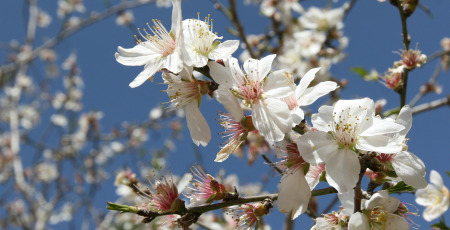In January and February Israel’s almond trees are in full bloom, coinciding with the Jewish holiday of Tu Bishvat, also known as the birthday of the trees, which this year fell on January 29.
Almond trees have a secret weapon: Their nectar produces an extraordinary and dangerous poison. This is the only known plant to have this poison in its flowers’ nectar and a recent study at the University of Haifa has revealed that bees are mysteriously drawn to the toxic substance, but not harmed by it.

A group of researchers at the Department of Environmental and Evolutionary Biology and the Department of Science Education at the University of Haifa-Oranim speculate that the toxin called amygdalin that is found in almond tree nectar is in fact an evolutionary development that gives the tree an advantage over others in its surroundings.
The researchers investigated why this plant produces such a potent toxin – a by-product of which is cyanide.
“It is difficult – and sometimes impossible – to determine the workings of evolution, but it is likely that amygdalin is produced in the almond nectar so as to give the almond tree an advantage in reproduction,” explains Prof. Izhaki, one of the researchers.
The substance is deadly for small mammals and dangerous for humans, but is not poisonous for insects, such as the honey bee, and it even produces a stimulant that attracts the bees.













